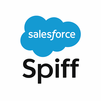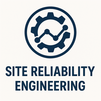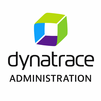
Workday Adaptive Planning Training provides in-depth knowledge of enterprise performance management, focusing on budgeting, forecasting, and real-time reporting. Participants learn to build models, configure sheets, create assumptions, manage versions, and use dashboards for performance tracking. The course also covers integration techniques and scenario planning for strategic decision-making. Designed for finance and planning professionals, this training enhances the ability to drive data-driven insights and align financial planning with business goals.
Workday Adaptive Planning Training Interview Questions Answers - For Intermediate
1. What is the use of Allocation Rules in Workday Adaptive Planning?
Allocation rules in Adaptive Planning automate the distribution of values from one account to multiple targets based on predefined criteria like percentages or driver metrics. This feature is essential for spreading shared costs (e.g., rent, utilities) across departments or cost centers accurately.
2. How do you import data into Workday Adaptive Planning?
Data can be imported using the Data Integration framework, through flat files (CSV), or via direct connectors to ERP systems. The process involves mapping data fields, validating the data, and loading it into specific sheets or actuals tables for planning and reporting.
3. What are calculated accounts, and how are they used?
Calculated accounts use formulas to derive values automatically based on other account data. They are used to compute metrics like gross profit, EBITDA, or growth percentages, enhancing the analytical capabilities of the model without requiring manual input.
4. How do you handle multi-currency planning in Adaptive Planning?
Adaptive Planning supports multi-currency environments by allowing users to input local currency values and convert them into a base currency using exchange rate tables. This ensures accurate consolidated reporting across global entities.
5. What is the role of the Level Hierarchy in planning?
The level hierarchy defines the organizational structure—such as departments, regions, or entities—used in planning. It facilitates data roll-ups, workflow assignments, and access control, ensuring a logical and manageable planning process across the enterprise.
6. How do you ensure data accuracy and validation in Adaptive Planning?
Data accuracy is ensured through validation rules, audit trails, and version control. Users can set thresholds, flags, or formula-based checks to catch anomalies. Admins can also lock versions to prevent unauthorized changes once a plan is finalized.
7. Explain the difference between planning sheets and assumption sheets.
Planning sheets are used for entering financial data across accounts and dimensions, while assumption sheets define variable inputs like growth rates, inflation, or headcount drivers. Assumption sheets support more dynamic and easily adjustable planning models.
8. What are Task Lists and how are they used in Adaptive Planning?
Task Lists guide users through their planning responsibilities by outlining the steps and sheets they need to complete. Admins assign task lists to roles or users to ensure timely input, improve accountability, and track progress in real time.
9. How does Adaptive Planning support rolling forecasts?
Rolling forecasts extend traditional budgeting by continuously updating projections based on actual data. Adaptive Planning enables users to maintain up-to-date forecasts by automatically shifting the planning window and aligning plans with real-time business changes.
10. What is the significance of time structure in planning models?
Time structure defines the fiscal calendar used in planning—monthly, quarterly, or custom periods. It is critical for aligning plans with organizational cycles and generating accurate time-based reports and comparisons.
11. How do you use metrics in Adaptive Planning dashboards?
Metrics provide KPIs that can be visualized in dashboards, like revenue per employee or operating margin. These can be calculated using account data and dimensions, offering actionable insights and performance tracking across departments.
12. Can you describe the audit trail functionality in Adaptive Planning?
Audit trails log changes made to data, formulas, and structural elements, capturing who made the change, what was changed, and when. This supports compliance, traceability, and helps in identifying and correcting errors quickly.
13. What types of reports can be generated in Adaptive Planning?
Users can generate standard financial reports, variance reports, scenario comparisons, and ad hoc reports using custom filters and dimensions. Reports can be shared, scheduled, or exported to Excel or PDF for external stakeholders.
14. How is workforce planning handled in Adaptive Planning?
Workforce planning involves forecasting headcount, salaries, benefits, and related expenses. It uses modeled sheets to plan by employee or role and allows integration with HR systems for accurate data, helping organizations align staffing with financial goals.
15. What are some common challenges faced during Adaptive Planning implementation?
Challenges include data integration complexities, change management, user adoption, and ensuring model scalability. Addressing these requires clear planning structures, effective training, and ongoing collaboration between finance and IT teams.
Workday Adaptive Planning Training Interview Questions Answers - For Advanced
1. How can organizations implement rolling forecasts effectively in Workday Adaptive Planning?
To implement rolling forecasts effectively, organizations must first structure their planning models to accommodate continuously shifting time periods. In Workday Adaptive Planning, this involves configuring the time structure to allow dynamic updates and ensuring that forecast versions extend beyond the traditional fiscal year. Planners can automate the creation of forecast versions using formulas that reference actuals, assumptions, and trends. Data integration ensures that actuals are refreshed frequently, enabling real-time comparisons with forecasts. Organizations also leverage assumptions and driver-based models to update forecasts based on key performance indicators. By involving cross-functional teams and adopting monthly or quarterly review cycles, businesses gain agility and visibility into future performance using Adaptive Planning’s collaborative and intuitive tools.
2. What best practices should be followed for designing a scalable model in Adaptive Planning?
Designing a scalable model in Adaptive Planning requires strategic planning of level hierarchies, account structures, and dimensional modeling. Best practices include limiting the number of dimensions to what is analytically necessary, defining reusable assumptions, and building flexible formulas that adjust with minimal changes. Data normalization and modular model design promote efficiency and make updates easier. Another critical practice is to avoid excessive use of custom accounts when shared standard accounts suffice. Thoughtful use of modeled vs. cube sheets based on planning use cases, along with separation of actuals from plan data, ensures clarity and model integrity. Maintaining documentation of structures, business rules, and data flows helps in onboarding new users and ensuring continuity.
3. How does Workday Adaptive Planning support financial consolidation across multiple entities?
Adaptive Planning supports financial consolidation by enabling data aggregation across multiple entities through hierarchical level structures. Currency conversion, intercompany eliminations, and account mappings allow accurate consolidation that complies with global financial standards. Users can assign entities to different versions or dimensions, apply adjustments using calculated accounts, and align local charts of accounts with corporate structures. Multi-currency support and configurable exchange rate tables facilitate the conversion of financials into the group reporting currency. Eliminations and reclassifications can be handled manually or through automation using allocation rules or adjustment entries, making the consolidation process streamlined, auditable, and transparent.
4. How does Adaptive Planning facilitate strategic workforce planning?
Strategic workforce planning in Adaptive Planning is achieved through modeled sheets that allow detailed, employee- or role-level forecasting. Organizations can model compensation, bonuses, benefits, and taxes based on job grades, departments, and geographies. Workforce assumptions—such as salary growth, hiring timelines, attrition, and promotions—are built into the model using assumptions and formulas. Integration with Workday HCM or other HR systems enhances data accuracy and synchronizes headcount data. Forecasting can then be aligned with financial targets, enabling finance and HR teams to assess workforce gaps, future hiring needs, and budget impacts of talent strategies.
5. Explain the formula assistant and its role in Adaptive Planning.
The formula assistant in Workday Adaptive Planning is a powerful tool that enables users to build and validate formulas using a guided interface. It supports a wide array of functions such as IF statements, LOOKUPs, time-based functions, and dimensional references. The assistant helps prevent syntax errors by offering syntax guidance and dropdown options for selecting accounts, versions, levels, and dimensions. It also includes debugging features to check formula logic against sample data. The formula assistant empowers both technical and non-technical users to develop sophisticated calculations that drive model logic, automate financial computations, and enable scenario modeling.
6. How can Adaptive Planning help streamline capital expenditure (CapEx) planning?
Adaptive Planning streamlines CapEx planning by allowing organizations to create modeled sheets that represent individual assets or projects. These sheets can capture asset type, cost, acquisition date, useful life, and depreciation method. Formulas automatically calculate depreciation, capitalization, and retirement values over the asset lifecycle. Integration with balance sheet and income statement models ensures that capital investments flow through financial reports accurately. Organizations can evaluate multiple investment scenarios, assess ROI, and ensure that CapEx plans align with long-term strategic goals. Additionally, dashboard visualizations and workflows support decision-making and approvals across finance and operations teams.
7. What are Adaptive Planning’s capabilities for variance analysis?
Variance analysis in Adaptive Planning enables organizations to compare actual performance with plans, forecasts, or prior periods. Variances can be analyzed by value, percentage, or trend, across dimensions such as departments, regions, or products. Built-in reporting tools support drill-down to transaction-level details, helping finance teams identify root causes. Conditional formatting, calculated columns, and charts provide visual cues for rapid insights. With dynamic filters and slicers, users can isolate critical metrics and assess deviations across versions like Forecast vs. Actual or Budget vs. Actual. This helps organizations identify risks, control costs, and refine forecasting assumptions.
8. How does Adaptive Planning handle custom calendars and fiscal periods?
Adaptive Planning provides flexibility to define custom fiscal calendars, including non-calendar fiscal years, 4-4-5 or 13-period structures, and hybrid configurations. Admins can create time structures that align with corporate or industry standards. Each time structure supports planning, forecasting, and reporting, enabling consistent period-over-period analysis. Custom calendar settings influence sheet layouts, report timelines, and time-based calculations. The platform also accommodates time roll-forward features, allowing organizations to extend planning cycles without reconfiguring the entire model. This adaptability ensures that organizations in diverse sectors can align financial planning with their operational rhythms.
9. How can data integrity be maintained in Adaptive Planning with large datasets?
To maintain data integrity in large Adaptive Planning implementations, it is important to establish clear data governance practices. This includes using validation rules, formula-based checks, and workflow approvals. Scheduled data imports from ERP or CRM systems must be mapped and validated through import templates. Role-based security prevents unauthorized edits, while audit logs record all changes. Consistent version control ensures historical accuracy, and locked versions prevent data tampering. Periodic reviews and reconciliation with source systems further strengthen trust in planning outputs. Data health can also be monitored using dashboards that highlight anomalies or inconsistencies.
10. What is the role of assumptions in dynamic modeling and scenario planning?
Assumptions act as flexible variables within Adaptive Planning models, enabling organizations to adjust projections without rewriting formulas. These can include inflation rates, hiring targets, product pricing, or productivity ratios. In scenario planning, changing assumptions allows planners to quickly model the impact of various business environments. For example, increasing an interest rate assumption automatically recalculates debt service costs across all affected accounts. Assumptions make models adaptable and responsive, encouraging proactive decision-making. Centralized assumption management ensures consistency across departments and reduces the risk of conflicting data inputs.
11. How does Adaptive Planning support operational planning beyond finance?
Adaptive Planning is not limited to financial planning—it extends to operational domains such as sales, marketing, supply chain, and IT. Through multidimensional models and custom sheets, organizations can plan sales quotas, campaign costs, headcount, or IT infrastructure needs. Cross-functional teams use shared models with tailored access to collaborate in real time. Operational metrics—like units produced, customer churn, or call center volume—can drive financial forecasts. Integration with CRM, ERP, and HCM platforms enables end-to-end planning across the enterprise. This holistic approach ensures alignment between strategic goals and execution at all levels.
12. What are hybrid models and how can they be structured in Adaptive Planning?
Hybrid models combine cube sheets and modeled sheets to support both summarized and detailed planning. For instance, revenue might be planned in cube sheets by region and product, while workforce or CapEx planning occurs in modeled sheets at a detailed level. These components are linked through shared accounts and dimensions to maintain consistency. Hybrid models are ideal for organizations needing high-level forecasting with the flexibility of transactional-level inputs. They enable modular architecture, where different teams can contribute independently while rolling up into a centralized financial view. Structuring hybrid models requires thoughtful design of hierarchies, dimensional relationships, and inter-sheet dependencies.
13. How does Workday Adaptive Planning support KPI tracking and performance monitoring?
The platform supports KPI tracking through calculated accounts, dashboard metrics, and real-time data feeds. KPIs such as Gross Margin, EBITDA, Revenue per FTE, or Customer Acquisition Cost can be embedded into dashboards for continuous monitoring. Users can configure alerts for threshold breaches, generate automated variance reports, and visualize performance trends over time. With live connections to data sources and built-in reporting tools, finance and business leaders can monitor performance against targets and respond proactively. Interactive dashboards provide clarity on which levers are affecting performance, enabling faster corrective actions and better strategic alignment.
14. What is the function of dimension attributes in Adaptive Planning and when should they be used?
Dimension attributes provide additional metadata for dimensions, enabling more granular reporting and filtering. For example, a department dimension might have attributes like cost center code, location, or manager. These attributes enrich the analytical capabilities of reports and dashboards without expanding the number of dimensions. They can be used to group, sort, or filter data dynamically. Attributes also support conditional logic in formulas and assumptions, providing more flexibility in complex modeling. They are particularly useful in large enterprises with detailed segmentations, helping users gain deeper insights without overwhelming the dimensional model.
15. How can workflow management in Adaptive Planning improve accountability and collaboration?
Workflow management in Adaptive Planning enables finance teams to assign tasks, set deadlines, and track the completion status of planning activities across departments. Planners receive notifications and task lists guiding them through data entry and review processes. Approvers can monitor progress and provide feedback directly within the system. This structured approach ensures timely input, improves accountability, and reduces the risk of missed deadlines. Workflow visibility enhances transparency, allowing executives to track bottlenecks and reassign tasks if necessary. Effective workflow use results in smoother budget cycles and more collaborative planning across the organization.
Course Schedule
| Dec, 2025 | Weekdays | Mon-Fri | Enquire Now |
| Weekend | Sat-Sun | Enquire Now | |
| Jan, 2026 | Weekdays | Mon-Fri | Enquire Now |
| Weekend | Sat-Sun | Enquire Now |
Related Courses
Related Articles
Related Interview
- Certified Ethical Hacker (CEH) Training Interview Questions Answers
- Deep Learning Specialty Language Interview Questions Answers
- Kronos UKG Interview Questions Answers
- SAP Hybris (Functional & Developer) Interview Questions Answers
- SAP Master Data Governance on SAP S4 HANA Training Interview Questions Answers
Related FAQ's
- Instructor-led Live Online Interactive Training
- Project Based Customized Learning
- Fast Track Training Program
- Self-paced learning
- In one-on-one training, you have the flexibility to choose the days, timings, and duration according to your preferences.
- We create a personalized training calendar based on your chosen schedule.
- Complete Live Online Interactive Training of the Course
- After Training Recorded Videos
- Session-wise Learning Material and notes for lifetime
- Practical & Assignments exercises
- Global Course Completion Certificate
- 24x7 after Training Support











 Join our Live Instructor-Led online classes delivered by industry experts
Join our Live Instructor-Led online classes delivered by industry experts